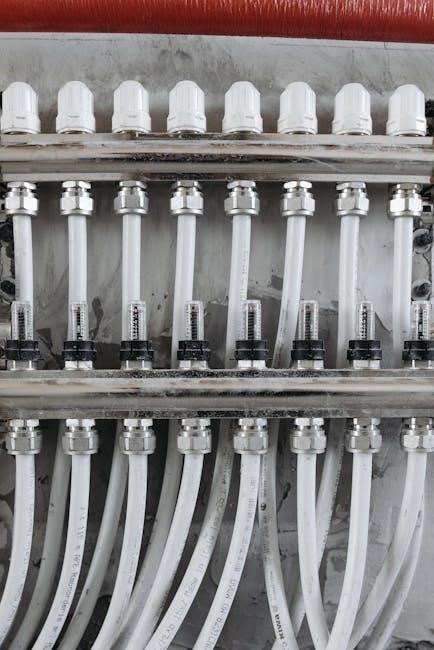Engine valve guides are key components that direct valve stems, ensuring proper operation, efficiency, and durability; They play a vital role in engine performance and longevity.
1.1 Definition and Purpose
Engine valve guides are critical components that align valve stems, ensuring proper movement and sealing. Their purpose is to maintain precise valve operation, reduce wear, and facilitate smooth engine performance. Guides are typically made from durable materials like manganese bronze, designed to withstand high temperatures and mechanical stress while enabling efficient heat transfer and lubrication.
1.2 Importance in Engine Operation
Valve guides are essential for preventing oil leakage, ensuring proper valve sealing, and maintaining engine efficiency. They minimize mechanical wear and tear while facilitating heat transfer, which is crucial for engine longevity. Without functional guides, engines may experience performance issues, increased oil consumption, and reduced power output, emphasizing their critical role in overall engine operation and reliability.
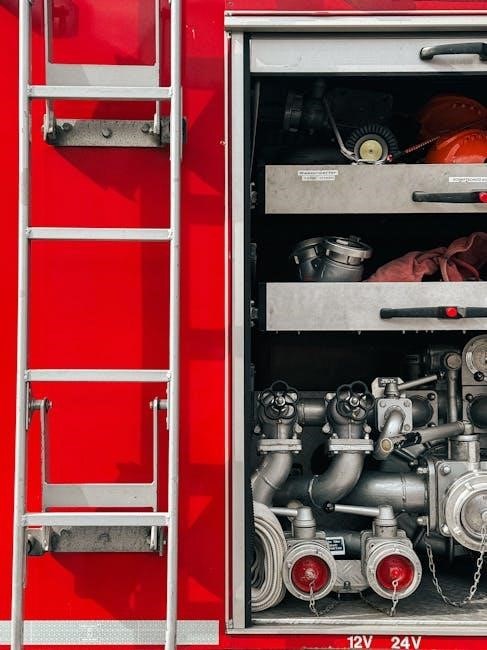
Structure and Components of Valve Guides
Valve guides consist of cylindrical components that house the valve stem, ensuring precise alignment and smooth operation. They often include a valve stem seal to prevent oil leakage.
2.1 Materials Used in Valve Guides
Valve guides are typically made from durable materials like manganese bronze, steel, or cast iron. These materials offer excellent wear resistance and thermal stability, ensuring longevity under high engine temperatures and stresses. The choice of material depends on the engine’s application, with some high-performance engines using advanced alloys for better durability and heat transfer efficiency.
2.2 Design and Construction
Valve guides are precision-engineered to fit snugly into the engine’s cylinder head, aligning the valve stem accurately. Their cylindrical design ensures smooth operation, and they are often press-fitted for stability. Advanced designs incorporate features like lubrication channels and thermal coatings to enhance performance and longevity, ensuring reliable engine operation under various conditions.
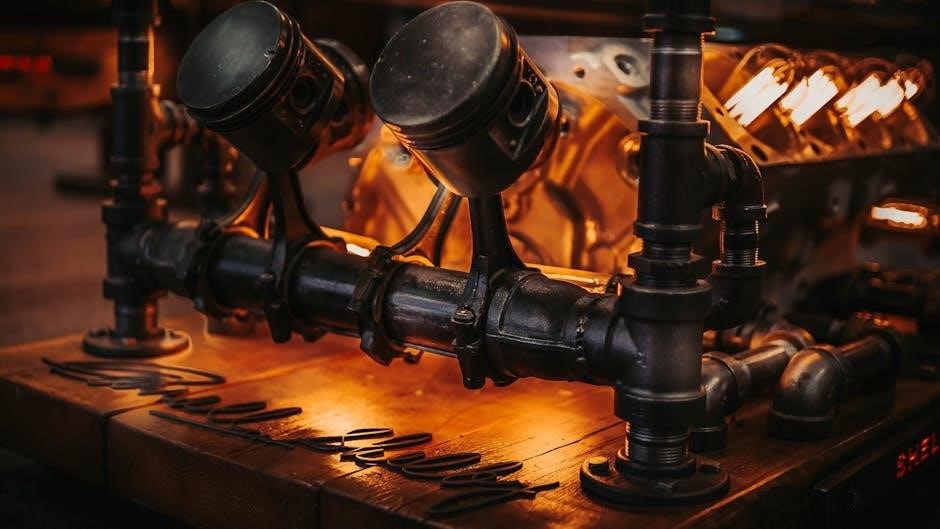
Functions of Engine Valve Guides
Engine valve guides ensure proper valve stem alignment, facilitate heat transfer, and enable smooth lubrication. They minimize wear and tear, maintaining engine efficiency and reliability under various operating conditions.
3.1 Guiding the Valve Stem
Valve guides ensure precise alignment and smooth movement of the valve stem, enabling proper engine operation. They stabilize the stem, preventing wobble and misalignment, which can lead to premature wear and potential engine damage. This alignment is crucial for efficient combustion and overall engine performance, maintaining optimal functionality under varying operating conditions.
3.2 Heat Transfer and Lubrication
Valve guides facilitate heat transfer from the valve stem to the engine block, preventing overheating. They also ensure proper lubrication, reducing friction and wear. This maintains optimal operating temperatures and extends component lifespan, critical for reliable engine performance and efficiency under various conditions.
3.4 Reducing Wear and Tear
Valve guides minimize wear by ensuring proper valve stem alignment and preventing excessive movement. This reduces friction and potential damage to engine components. Worn guides can lead to increased oil consumption and performance issues, emphasizing the importance of regular inspections and timely replacements to maintain engine health and efficiency over time.

Installation and Alignment
Proper installation and alignment of valve guides are crucial for engine functionality. Precision tools ensure accurate fitting, while alignment prevents misplacement, avoiding potential damage and ensuring optimal performance.
4.1 Proper Installation Techniques
Proper installation of engine valve guides requires meticulous cleaning of the area to ensure a precise fit. Align the guide carefully and use a valve guide installer or driver to seat it correctly. If the valve doesn’t fit, a reamer may be necessary. Proper techniques prevent misalignment and wear, ensuring optimal engine performance and longevity.
4.2 Common Challenges During Installation
Common challenges during valve guide installation include misalignment, improper seating, and excessive wear on the valve stem. If the guide is not reamed correctly, the valve may not fit properly. Overloading or using incorrect tools can cause damage. These issues can lead to increased wear, oil consumption, and reduced engine performance, emphasizing the need for precise techniques and proper tools.
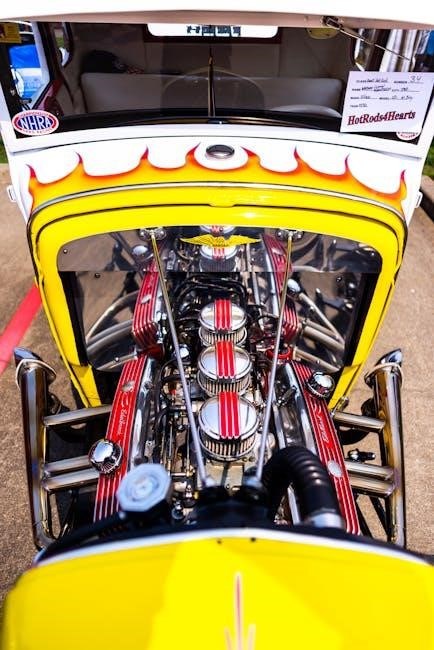
Maintenance and Repair
Regular inspection and cleaning of valve guides are essential to prevent wear and oil leakage. Reconditioning or replacing worn guides ensures optimal engine performance and longevity.
5.1 Inspecting Valve Guides for Wear
Inspecting valve guides involves checking for wear, oil leakage, and heat damage. Visual examination and specialized tools can detect excessive clearance or damage. Signs of wear include increased oil consumption and reduced engine performance. Regular inspections prevent severe damage, ensuring optimal engine function and longevity; Neglecting inspections can lead to costly repairs and decreased efficiency.
5.2 Cleaning and Reconditioning
Cleaning and reconditioning valve guides involve removing dirt and debris to restore proper function. Specialized tools and solvents are used to eliminate contaminants without causing damage. Reconditioning may include machining or replacing worn components to ensure optimal performance. Regular cleaning prevents oil leakage and enhances heat transfer, extending the lifespan of the valve guides and overall engine efficiency.
Symptoms of Worn Valve Guides
Worn valve guides often cause increased oil consumption, blue smoke from the exhaust, and engine performance issues like reduced power and rough idling.
6.1 Increased Oil Consumption
Worn valve guides allow engine oil to seep into the combustion chamber, leading to increased oil consumption. This results in blue smoke from the exhaust and higher maintenance costs over time.
6.2 Engine Performance Issues
Worn valve guides can cause engine performance issues, including reduced power output and efficiency. Misfires, rough idling, and poor acceleration may occur due to improper valve seating and heat transfer problems;
Replacing Valve Guides
Replacing valve guides involves specialized tools and precise steps to ensure proper alignment and function. The process typically includes removing old guides, installing new ones, and verifying accuracy.
7.1 Tools and Equipment Required
Replacing valve guides demands specialized tools, including valve guide reamers, installers, and presses. Measurement tools like calipers or micrometers ensure precise fitting. Proper equipment is crucial for accurate installation and durability.
7.2 Step-by-Step Replacement Process
Begin by removing the old valve guides using a guide puller. Next, clean and inspect the area. Ream the housing to the correct size, then measure and fit the new guide. Press the guide into place, ensuring proper alignment. Finally, lubricate the guide to prevent wear and ensure smooth operation.
Troubleshooting Common Issues
Common issues include excessive oil consumption, engine misfires, and valve stem wear. Inspect for worn guides, misalignment, or damage. Early detection prevents major engine damage.
8.1 Diagnosing Valve Guide Problems
Diagnosing valve guide issues involves identifying symptoms like increased oil consumption, engine misfires, or excessive noise. Inspect for wear, damage, or misalignment. Use tools like dial indicators to measure guide clearance. Visual checks for scoring or excessive play can confirm wear. Compression tests may also reveal guide-related issues, ensuring accurate diagnosis before repairs.
8.2 Addressing Misalignment and Wear
Misalignment and wear in valve guides are addressed by reaming or replacing the guides. Proper alignment ensures smooth valve operation. Worn guides are replaced with precision-fit inserts to restore functionality. Lubrication and material upgrades can enhance durability. Professional tools like reamers ensure accurate repairs, maintaining engine performance and preventing further damage. Regular maintenance is key to avoiding severe wear.
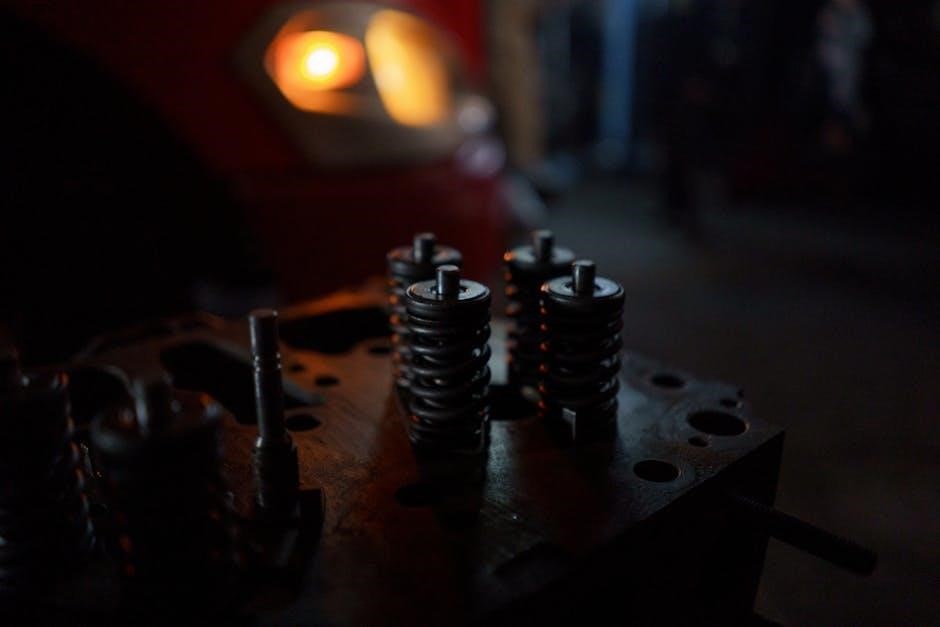
Role of Valve Guides in Engine Performance
Valve guides ensure precise valve stem movement, enhancing combustion efficiency and power output. They also improve fuel efficiency by maintaining proper engine operation and reducing energy loss.
9.1 Enhancing Power Output
Valve guides play a crucial role in enhancing engine power by ensuring precise valve stem movement, which optimizes combustion efficiency. Properly aligned guides enable valves to open and close effectively, maximizing airflow and fuel burning. This leads to increased power output and smoother engine operation, making them essential for high-performance engines.
9.2 Improving Fuel Efficiency
Engine valve guides contribute to better fuel efficiency by ensuring precise valve movement, which optimizes combustion chamber sealing. This reduces oil leakage and minimizes energy loss, allowing the engine to burn fuel more efficiently. Properly functioning guides help maintain optimal engine performance, directly translating to improved fuel economy and reduced operational costs over time.
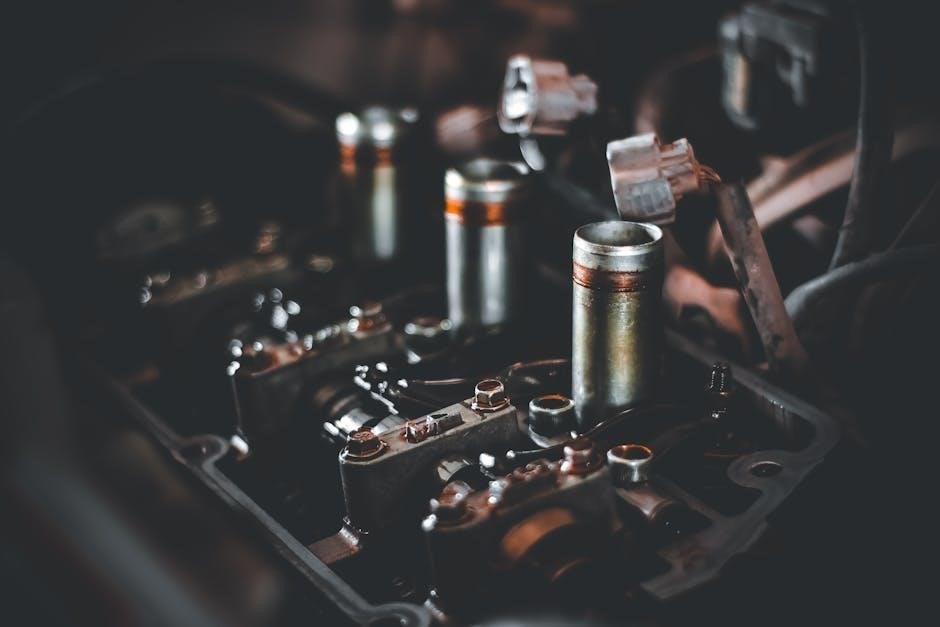
Modern Advancements in Valve Guide Technology
Modern valve guides utilize advanced materials like manganese bronze and innovative designs for enhanced durability. These updates improve heat transfer, reduce wear, and optimize engine performance.
10.1 Use of Advanced Materials
Modern valve guides now incorporate advanced materials such as high-strength alloys and ceramic coatings. These materials enhance durability, reduce friction, and improve heat dissipation, leading to better engine performance and efficiency while minimizing wear and tear over time;
10.2 Innovative Designs for Better Durability
Innovative designs in valve guides include improved geometries and surface finishes to enhance strength and reduce friction. These designs incorporate advanced machining techniques and coatings, ensuring better heat resistance and durability. Such innovations minimize wear and tear, leading to consistent engine performance and longer service life of critical components.
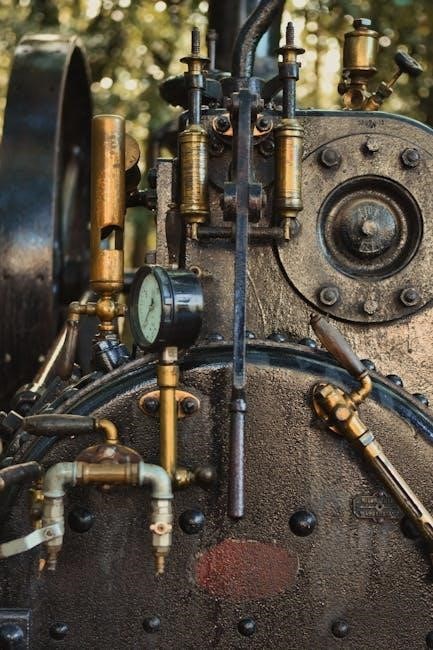
Case Studies and Real-World Applications
Real-world applications highlight valve guides’ critical role in high-performance engines, heavy-duty machinery, and industrial power systems, ensuring reliability and efficiency in demanding operational conditions.
11.1 High-Performance Engines
In high-performance engines, valve guides are crucial for maintaining efficiency and power output. They ensure precise valve stem alignment and optimal heat dissipation, even under extreme conditions. Advanced materials and designs, such as manganese bronze, enhance durability and reduce wear. Properly functioning guides prevent oil leakage and maintain compression, critical for peak performance. Modern innovations continue to improve reliability in these demanding applications.
11.2 Heavy-Duty and Industrial Engines
In heavy-duty and industrial engines, valve guides are designed to withstand extreme stress and prolonged operation. Durable materials like manganese bronze are often used to ensure longevity. These guides efficiently manage heat dissipation and maintain precise valve stem alignment, reducing wear and tear. Their reliability is crucial for minimizing downtime in industrial applications, where continuous operation is essential for productivity.
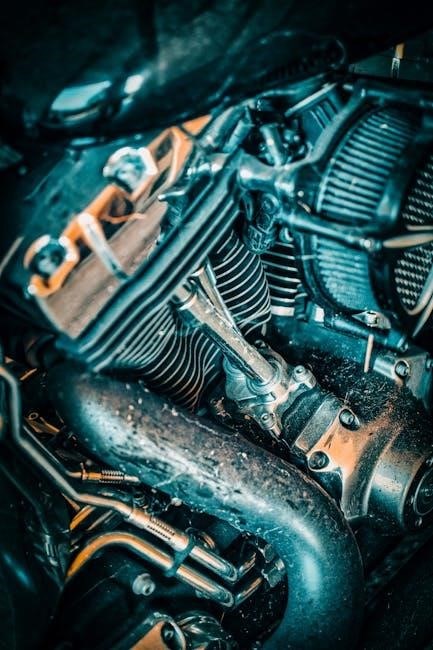
Best Practices for Longevity
Regular inspections, avoiding overloading, and proper installation techniques are essential. Adhering to manufacturer guidelines ensures optimal performance and extends valve guide lifespan.
12.1 Regular Maintenance
Regular maintenance is crucial for extending valve guide lifespan. Inspect guides at recommended intervals, checking for wear, and clean them thoroughly. Addressing issues early prevents excessive damage. Ensuring proper lubrication and avoiding overheating are key. Replacing worn guides promptly helps maintain engine efficiency and prevents oil leaks or performance loss. Consistent care ensures optimal engine operation and longevity.
12.2 Avoiding Overloading
Avoiding overloading ensures valve guides remain functional. Excessive stress from aggressive driving or extreme engine conditions can accelerate wear. Monitoring engine performance and adhering to manufacturer guidelines helps prevent overload. Proper driving habits, regular inspections, and using high-quality materials further mitigate risks, ensuring guides operate efficiently without premature degradation.
Environmental Impact
Engine valve guides contribute to environmental sustainability by reducing emissions and promoting eco-friendly materials; Proper maintenance minimizes ecological impact, aligning with green engine technologies for a cleaner future.
13.1 Reducing Emissions
Engine valve guides play a role in minimizing emissions by ensuring proper valve operation, reducing oil consumption, and preventing combustion gases from escaping. Efficient guides help maintain optimal engine performance, lowering pollutant output and supporting eco-friendly engine operation.
13.2 Eco-Friendly Materials
Modern valve guides often use eco-friendly materials like manganese bronze and advanced alloys, which reduce environmental impact. These materials are recyclable, durable, and promote sustainable engine practices. Their use aligns with global efforts to minimize ecological footprint while maintaining high performance standards.
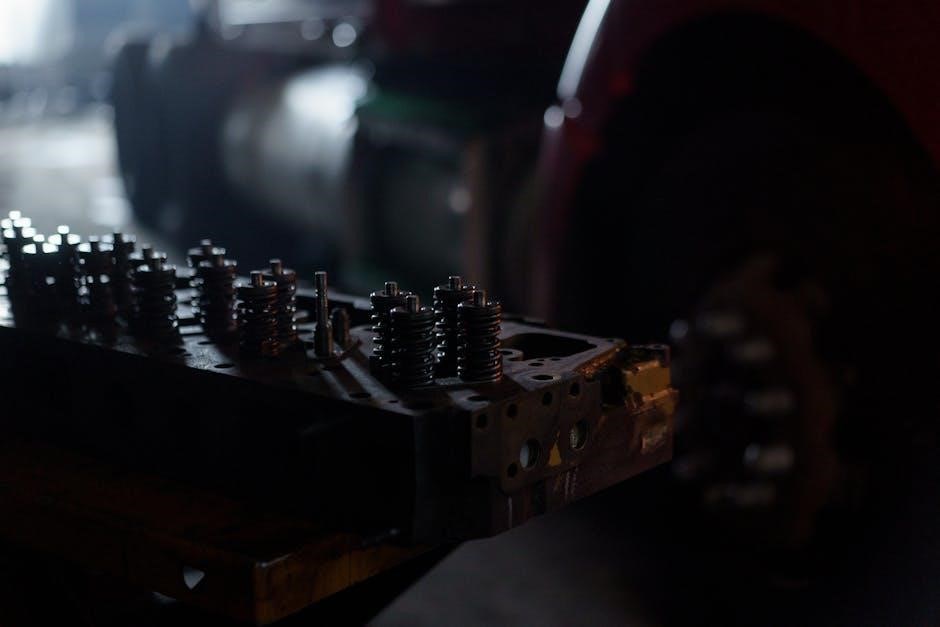
Cost Considerations
Engine valve guides involve initial installation costs, but proper maintenance and quality materials ensure long-term savings by reducing wear and extending engine lifespan.
14.1 Initial Installation Costs
The initial installation costs of engine valve guides include materials and labor. High-quality guides made from durable materials like manganese bronze may increase upfront expenses. Labor costs vary depending on whether the installation is done professionally or as a DIY project. Factors such as engine size and specific requirements also influence the total cost, making it a critical investment for engine durability and performance.
14.2 Long-Term Savings
Quality engine valve guides offer long-term savings by reducing maintenance needs and extending engine lifespan. Durable materials minimize wear, lowering replacement frequencies. Proper installation prevents premature damage, while efficient heat transfer and lubrication reduce operational strains. These factors collectively lower repair costs and fuel consumption, making valve guides a cost-effective investment for engine longevity and performance over time.
Engine valve guides are crucial for optimal engine performance, durability, and efficiency. Proper maintenance and quality materials ensure long-term reliability and reduced operational costs.
15.1 Summary of Key Points
Engine valve guides are essential for directing valve stems, ensuring proper engine operation. Made from durable materials like manganese bronze, they facilitate heat transfer and lubrication, reducing wear. Worn guides can lead to increased oil consumption and performance issues. Proper installation, maintenance, and quality materials are critical for long-term engine reliability and efficiency, emphasizing their vital role in overall engine functionality and longevity.
15.2 Future Trends in Valve Guide Technology
Future trends in valve guide technology include the use of advanced materials like high-strength alloys and ceramic coatings for improved durability. Innovations in 3D printing may enable customized guides for specific engines. Additionally, self-lubricating coatings and smart technologies for real-time monitoring are expected to enhance performance and longevity, ensuring optimal engine efficiency and reduced maintenance needs.
